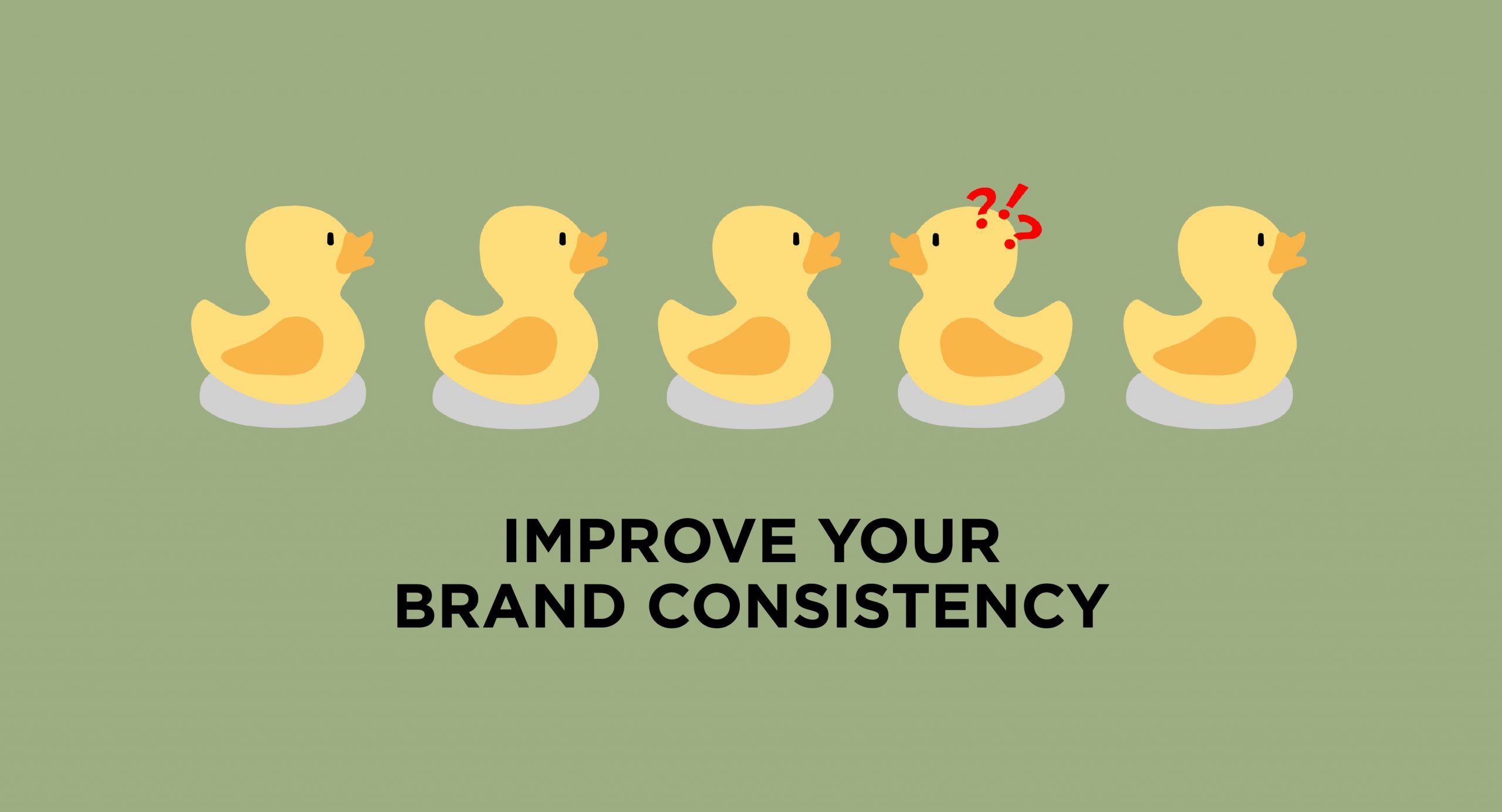BRANDING
How to Add Value to Your Brand and How to Communicate This to Your Customers
For any successful business, their brand is one of their most valuable assets. To reach this point requires a commitment to building a truly exceptional brand in the first place. Not only do you need to create a brand identity that makes you stand out, but you also need to communicate to your customers the value that your brand represents.
So, if you want to go about doing just that, read on for our guide.
What does it mean to add value to my brand?
‘Adding value’ can be a problematic term to define fully. There are lots of different ways you could conceivably add value to a product or service. You can make it more financially appealing. You could provide a more efficient service. Or you could change the design aesthetics.
With so many different things falling under the same title, it’s essential to carefully consider what is really meant by adding value to your brand.
When you’re considering your brand’s value, you need to put yourself in your customers’ shoes. Their opinion is the most important one. With that in mind adding value to your brand means creating a product/service and experience that solves your customers’ problem. The way that you do that should prioritise the features and aesthetics that your customers most highly rate.
What is customer perceived value?
When it comes to anything relating to your brand, the most important critics are your potential customers.
When they look at your marketing and all your messaging, they will come to an opinion about how much value you can offer them. This is usually a balance between the benefits they get from choosing you and the cost. When your customers weigh these points, they will determine the value of your brand.

It’s important to remember that what customers are most often looking for are solutions. For instance, you don’t buy a hammer to have a hammer. You buy a hammer so you can put nails in a wall. What this means is that a large factor in the calculation of customer perceived value is going to be a judgement of how well your solution will work for each customer.
Adding extras to your solution might seem like a shortcut to increasing your customer perceived value. However, if the extras are of no use to your customers, they won’t alter the value at all. For instance, I wouldn’t value a hammer anymore if it also played music – that’s not what I need a hammer for.
Competing on value or competing on price?
It can be easy to get sidetracked into focusing only on price. When asked to picture a ‘value’ item, many people picture discount or cheap options. However, there is a lot more to value than just the cost.
The price of your product should absolutely be considered when you are thinking about the value you’re offering. Pricing yourself at the lower end of the marketplace can also be a reasonable way to compete. Doing so does place you on a certain track, however.
If you decide to complete on price alone, then you are deciding to offer not only a low priced solution but in most cases a low-value one as well. Otherwise, you’ll be hard-pressed to actually make a profit.
Choosing to compete on value instead of price means that you can make a better quality product and price it accordingly. By focusing on the value, you can get out of the race to the bottom and not only create something that your customers want, but also place yourself in a position to have larger profit margins.
You need to clearly understand which type of company you are. If you are focused on providing value, you will be marketing towards a different type of consumer than if you choose to compete on price alone. Knowing who you are marketing to is a vital component of any brand strategy.
Understand value with market research
Because the value of what you’re selling is very much in the eye of your customers, it’s vital that you carry out thorough research. In order to give your customers a product they value, you need to clearly understand what is most important to them.
Market research is a vital piece in developing your brand strategy. It is something that you should also regularly return to. Customers’ opinions change, and so does the competition. In order to continue to offer a solid value proposition to your customers, you need to continue to check in with them about what they want and need. If their priorities change, then the perceived value of your solution can also change.
Make social listening a habit
It can be tempting to rely on numbers to assess the effectiveness of social media offerings. However, if you just look at the numbers of followers, likes, and #tags, you’ll be missing out on a wealth of useful information.
Social media gives you the ability to look at the broader background to your customers. You can see what they care about, what they have to say about your company, and what the rest of your industry is doing.
Taking the time to listen to your followers can provide you with valuable insight. It also gives you the opportunity for more personal interactions. Both of these are ways to add to the value of your brand. You can use these insights to tailor your solution to your customer’s needs, and you can make them feel heard. There is no better way to build loyalty and buy-in than that.
Show your customers you ‘get’ them
Because value is a rather intangible quality, it means that there are a lot of less obvious components to it. Whether or not a brand aligns with a customer’s ideals and world view can be a large contributing factor to how much value a brand is perceived to have. By showing your customers that you have a shared view of the world, you can raise your estimation in their eyes.
A recent example of this is how large brands responded to the BLM movement that followed the death of George Floyd. P.E. Nation posted supportive messages about equality on Instagram. Aesop shared the names of other black people who had been killed by police and made donations to relevant charities.

Both of these were marketing decisions.
P.E. Nation received a fair amount of backlash. Many of their customers pointed to their lack of action and their vague messaging. At the same time, Aesop got a lot of positive reactions. Their messaging was more specific, and they did something, which showed a better understanding of how their customers felt.
Create (and deliver) a brand promise
When customers choose your brand, they should know exactly what to expect. One of the best ways to communicate your brand’s most important value proposition is through a promise. This makes it clear to your customers what you value most. It’s a quick way for them to assess if your views on what’s important matches theirs.
However, there is absolutely no point in making a promise if you are unable to keep it. If you say you are going to do something, it is important to make sure you do all you can to keep your word. If you don’t, it will get out, and that will be what your brand becomes known for.
Improve the user experience
As we’ve explored, value goes far beyond money. In fact, one of the most valuable things you can offer your customers is time. If you can find ways to save them time or make the time they spend using your product easier and more pleasant, then you will be adding a large amount of value to your offering.
Focusing on your users’ experiences will identify places where you can smooth things out. Creating value is all about seeing things from your customers’ point of view. Streamlining and improving all aspects of your customers’ experience is an important tool for building the value of your brand.
Emphasise unique qualities
When you’re competing in a crowded market, it’s important to know what makes you stand out from the crowd. This means taking the time to get to grip with what your competitors offer and then highlighting what it is that makes you unique.
By making a point to tell your customers about what makes you different, you’re also telling them about how you are the better value option.
Humanise your business
As a species, we have an innate desire to form social bonds. We’re so good at it that we see faces in everything from clouds to the dirt on a truck. When it comes to marketing, you can use this desire to form bonds to help build your brand. The easier you make it for your customer’s to form a relationship with your brand, the stronger that relationship will be.
There are lots of easy ways to bring the human touch to your brand and elevate it from being a faceless corporate entity. But, before you go running out to find the perfect face for your brand, why not instead make use of all the people who already have.
Using your real employees in their real workspaces is a great way to bring some life to your brand. You can be a little playful and let some of your employees’ personalities shine through as well.
Your employees are your greatest resource when it comes to humanising your brand. They are ideally placed to be the ambassadors you need. They know your company and hopefully are invested in your company’s success.

When possible, try to interact with your customers on a personal level. This can be as simple as personalising your automated mailings; it’s a lot easier to feel positive about an email when you’re addressed by name rather than as ‘valued customer’.
Deliver value before and after the sale
When you’re thinking about the value you offer your customers; you need to think about their entire experience. When value is behind your offering, you need to make it a core part of everything you do. It can be tempting to simply focus your efforts on small sections of the user experience.
It’s not uncommon to fall into the trap of focusing solely on the product or the sales experience. However, customers will focus on the aspects of their experience that are ‘less than’. It’s no good having an amazing sales experience if the after sale care is sub-par. If you set your brand up as the best value choice, you need to consistently deliver on that promise.
Involve customers behind-the-scenes
Customers love to feel like they have a real connection with their favourite brands. The better they know your brand, the more loyal they will be and the better they will be as a brand ambassador. There are two great ways to achieve this.
The first is to invite your customers to see what happens behind the scenes. This can be as simple as creating some videos that show some of the unseen aspects of your company. Giving customers this sort of behind the scenes access makes them feel more invested in your company.
The second way to get customers involved is to ask for, and make use of, user-generated content. People love to see their pictures and content featured. So, if one of your customers makes something great, then why not ask if you can use it. Or ask all your customers to share pictures or videos of your product. It’s a cheap and easy way to create a buzz and to help turn your customers into ambassadors.
Communicate to employees, not just customers
It’s vital that before you tell your customers something, you first tell all of your employees. This is a step that can be easy to forget. Doing so can cause a lot of problems and make your company look unprofessional.
One big reason for doing this is so that your employees aren’t blindsided. If you make a promise to your customers about something, then you can guarantee that it’s going to come up during a sales pitch or a customer service call. If your employees don’t know what the customers are talking about, then it causes problems for everyone. You employees feel like they’ve been left out of the loop, and your customers lose confidence that you’ll follow through on your promises.
Another reason why it’s important to communicate with your employees is that consistency is a massive component of building an effective brand. All of your employees will have some contact with customers or potential customers at some point, so it’s important that they all give the same message.
If every point of contact a customer has with a company gives them a different message, then they won’t feel certain about what the brand is actually offering.
Related Questions
What is customer lifetime value?
Customer lifetime value is a way of looking at how much profit you make from a customer over the whole relationship. It moves you beyond the purchase to purchase value of each interaction. It’s important to consider because it gives you a better projection of your long term profits from each customer.
Recruiting new customers is more expensive than selling to existing customers. So you want to try and maximise your customer lifetime value. If your customer lifetime value is significantly lower than you expect, this can be an indication that there is a problem with your customer experience.
Keeping an eye on your customer lifetime value can warn you if you need to make any changes to your business model, or if changes you’ve already made are effective.
How can I differentiate my brand from competitors?
If you are in a crowded marketplace, it’s important to stand out from the crowd. There are a few different ways to do that. In order to decide which is best for you, you’ll need to invest some time assessing your competitors and comparing your offering to theirs.
The best way to differentiate your brand is to identify what makes you unique. What do you offer that no other competitor does? If you can identify a unique feature, then this should be the focus of your messaging to customers. This allows you to build an identity as the company that does ‘x’.
If there is no definitive feature that you can point to make your company stand out, you can instead look at your position in the market. Are you the lowest cost option, or are you the high-quality deluxe option? You can use your price point as a means to differentiate yourself.
A final option to differentiate yourself is to find your voice. If your brand has a unique and individual voice and message, that can be enough to make you stand out. This comes from some clever and conscientious branding. In fact, however you differentiate your company from the rest; it will rely on having an effective branding strategy.















